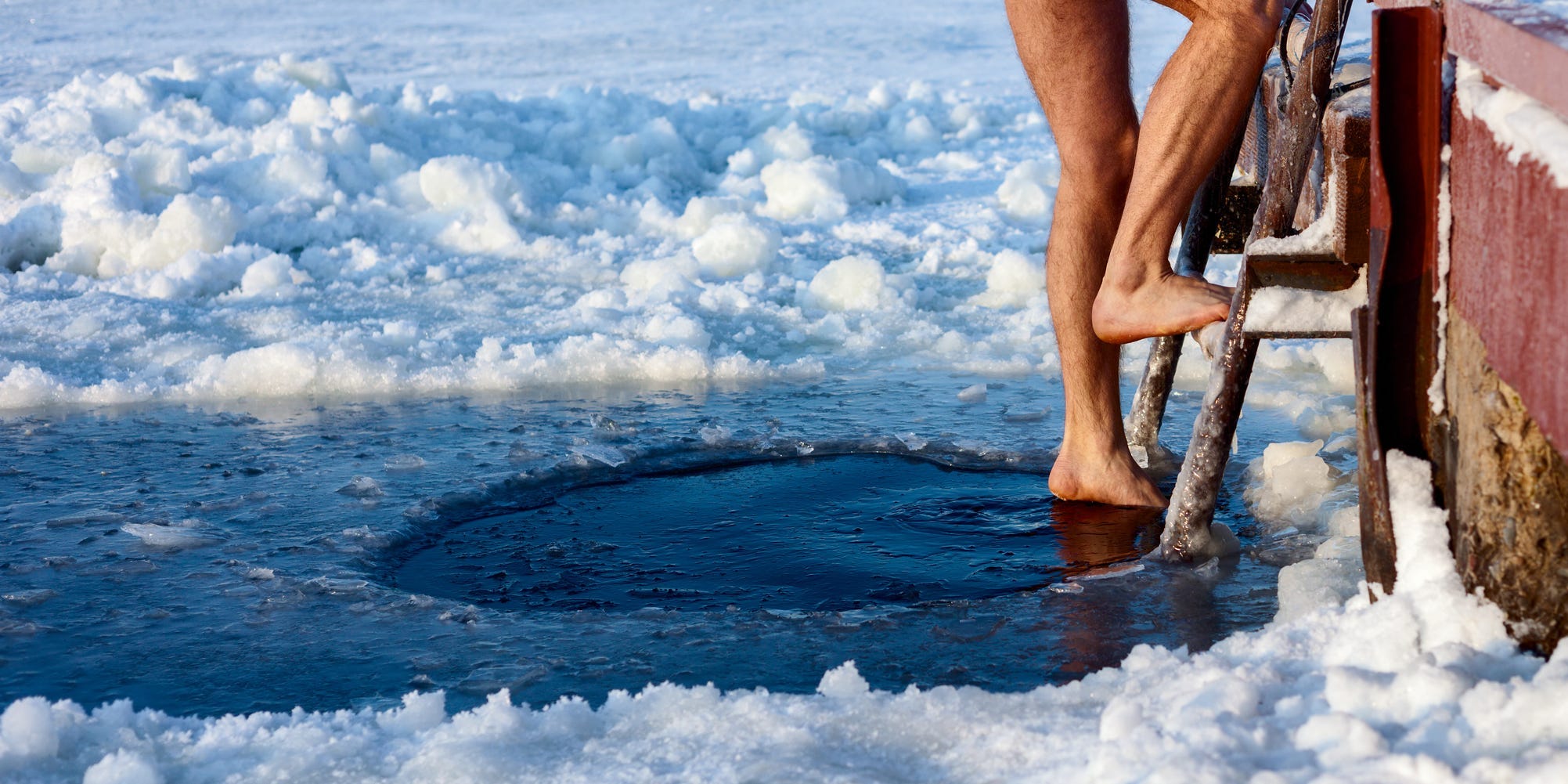
mihtiander/Getty Images
- Ice baths are when you submerge yourself in 55-degrees water for 10 to 15 minutes after exercise.
- Ice bath benefits may help ease sore muscles and speed up muscle recovery, but research is mixed.
- Ice baths are not dangerous for most, but avoid them if you have circulation issues or open wounds.
- Visit Insider's Health Reference library for more advice.
After an intense workout, some people like to submerge themselves in ice baths – a 10-minute bath of cold water, typically around 60 degrees Fahrenheit.
Doesn't sound fun? Well, there's actually some logic to this approach. In fact, ice baths are especially popular among professional athletes.
So, if you're debating over whether an ice bath is for you, or not, here's what you need to know.
Ice baths benefits
The intended benefit of ice baths also called cold water immersion, is to reduce muscle soreness and speed up muscle recovery after an intense workout. To reap the benefits the bath should be taken up to two hours after you finish exercising.
"Coldwater immersion after a potentially damage-inducing or soreness-inducing workout will improve muscle soreness up to one to four days afterward," says Rebecca Stearns, an assistant professor in the Department of Kinesiology at the University of Connecticut.
A 2013 review comparing different types of immersion found cold water immersion can enhance muscle recovery. It concluded that a 5 to 15-minute bath in water that was 10 to 15 degrees Celsius, or 50 to 59 degrees Fahrenheit, appeared to be most effective in exercise recovery compared to immersing yourself in hot water, warm water, or alternating between hot and cold.
After intense exercise, your muscles may be sore due to two factors:
- Micro-tears in your muscle fibers
- The accumulation of waste products such as lactic acid, which causes inflammation
If you are doing resistance training, "a little bit of micro-tearing within muscle fibers is actually expected in order for you to get bigger or stronger," says Jenna Baynes, a certified athletic trainer and clinician at James M. Benson Sports Rehabilitation Center at the Hospital for Special Surgery.
However, you don't want to strain the muscles too much. "[An ice bath] helps prevent your muscle fibers from getting more damaged," Baynes says, which may enhance muscle recovery.
An ice bath also makes your blood vessels constrict, which can help flush out waste products like lactic acid, thus helping you recover faster.
Other research has found ice baths may not be as effective. A small 2020 study looked at the effect of 10 minutes in cold water, room temperature water, or just resting on recreational runners after they completed a 10k. It assessed pain, how far the runner could hop, and other measures, and found cold water was no more effective at inducing recovery than room-temperature water or rest.
Some research has even found ice baths could prevent muscle growth. For example, a small 2015 study of physically active men found ice baths after strength training hindered muscle growth more than those who did an active recovery.
Still, some athletes swear by ice baths, because they feel better afterward. Anecdotally, there's a soothing effect, and people feel rejuvenated, Baynes says.
Coldwater immersion is also used to prep athletes for competition, and for medical purposes, including treating heatstroke. However, guidelines on using ice baths for these other purposes are different and should be discussed with a doctor or athletic trainer.
Are ice baths dangerous?
Generally, ice baths are not dangerous. But they are not recommended for people with certain conditions that could disrupt circulation, Stearns says.
If anyone is taking an ice bath and starts to lose sensation in their toes, or it becomes painful, they should get out, Stearns says. Plus, you don't need to sit in cold water for long to reap the benefits.
In fact, a small 2018 study found cold water immersion helped recovery after a workout, and that a 10-minute bath was as beneficial as a 20-minute bath, suggesting that staying in an ice bath longer is not necessarily better.
Stearns recommends sitting in ice baths for 10 to 12 minutes at around 55- to 65-degree-Fahrenheit. Also, agitate the water with your hands when taking an ice bath, says Stearns. That's because the water next to your skin will warm up.
Does an ice bath make sense for you?
Ice baths only make sense if you've finished an uncharacteristically intense workout. For example, if you are accustomed to running a couple of miles a day and just finished a half marathon, that's when you should consider an ice bath.
If you haven't pushed your body then an ice bath isn't worth it, since ice baths are "more an opportunity where you could see some benefit ... because you're expecting to have muscle soreness the next day," says Stearns.
Moreover, there are less extreme alternatives to ice baths. In fact, Baynes does not prescribe ice baths to her patients; she prefers to use ice packs or crushed ice because they are more comfortable and tolerable for patients, as well as more accessible because they don't require as much preparation.
But some people enjoy ice baths, and there's generally no reason not to use them. "If it's something you want to try, go for it," she says.
Insider's takeaway
An ice bath is not an everyday necessity, but it might help after a particularly intense workout or athletic event. If you think you'll be extra sore, an ice bath can help your muscles recover and ease any soreness.
For an ice bath to be effective, stick to 55- to 65-degrees Fahrenheit and no more than 12 minutes of submersion.